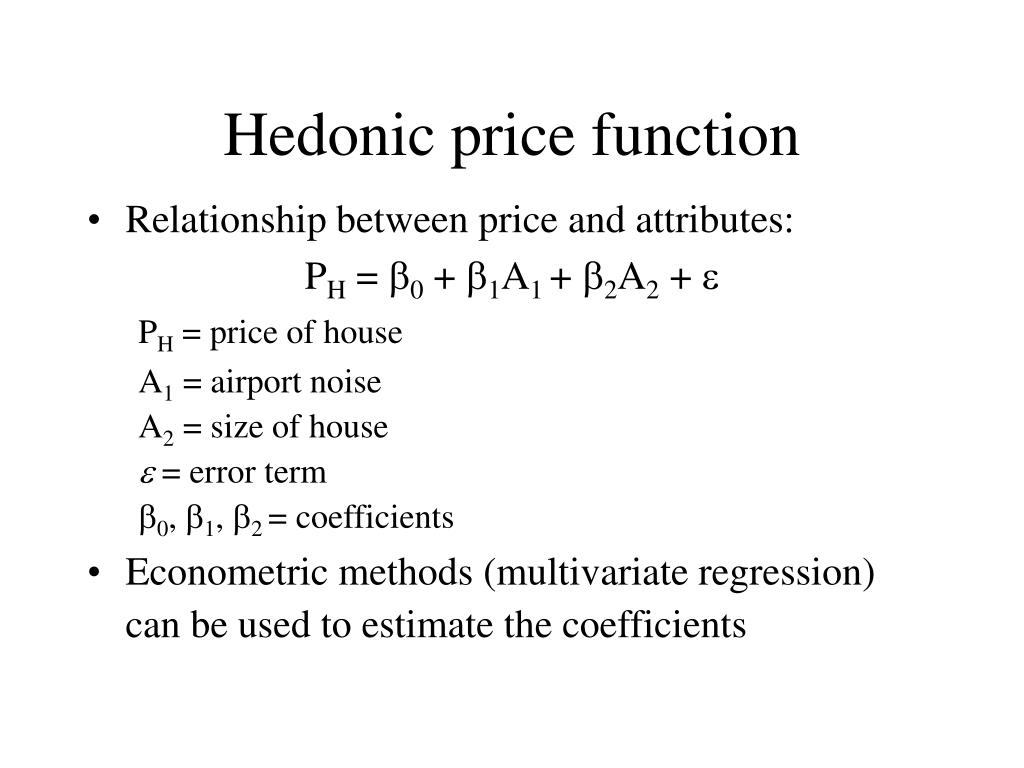

Section one deals with summarising relationships, section two discusses fitting curves – regression analysis, while section three presents the hedonic regression model. It is divided into six sections, each dealing with a particular aspect of model development. This paper is designed to be a reference document for those challenged with using regression analysis to determine the value of each characteristic of a goods or service. In this context, this paper provides a detailed account of the steps involved in the development of an OLS regression model (hedonic) and associated diagnostics using the Irish Central Statistics Office’s Consumer Price Index for New Cars as an example. It is important the appropriate methods are employed to take account of quality change in the HICP as this index need to be a credible and transparent.
#Hedonic regression how to#
This then leads to the well-known problem of how to measure price developments when the quality of the underlying goods and services is changing over time. Whenever a comparison between current and base period products is not possible, or when the current period basket reflects new market developments (i.e.

The HICP is defined as H I C P t = ∑ j w j, b ( p j, t p j, b ) w j, b the weight assigned to item j determined by the base period consumer expenditure shares and p j, t to the price of item j in period t. 9 This HICP it expresses the current cost of a fixed market basket of consumer goods and services as a percentage of the cost of the same identical basket at a base (normally mid- December of the year previous to the reference date). 8 The HICP is an important contributor the European Central Bank’s (ECB) monetary policy and is compiled monthly using a Laspeyres index formula, see Allen RGD. The European CPI is titled the Harmonized Index of Consumer Price Index (HICP - Council regulation (EC) No 2494/95). A useful way to understand the nature of these indices is to imagine a very large shopping basket comprising of a set, or basket of fixed composition, quantity and as far as possible quality of goods and services bought by a typical private household. Consumer Price Indices (CPI) are designed to measure such changes. The hedonic function is normally estimated by regression analysis.Īll the goods and services that consumers purchase have a price and that price may vary over time, and these changes are a measure of inflation. One of the more widely-recognised examples of hedonic regression is the Consumer Price Index, which examines changes to the value of a basket of goods over time and the hedonic function is used to adjust for differences in characteristics between varieties of the good in calculating its price index. P i = h ( c i ) p is the price of a variety (or model) iof a good and ci is a vector of characteristics associated with the variety. The term “hedonic methods” refers to the use in economic measurement of a “hedonic function,” h ( ), In addition, Moulton 7 provides a information on the importance and expanded use of Hedonic Methods. See Lancaster K, 1 Griliches Z 2, 3 and Diewert 4-6 for detail discussions on the development and application of hedonic prices. The value of each component is then determined separately through regression analysis. Hedonic regression is a method used to determine the value of a good or service by breaking it down into its component parts.


 0 kommentar(er)
0 kommentar(er)
